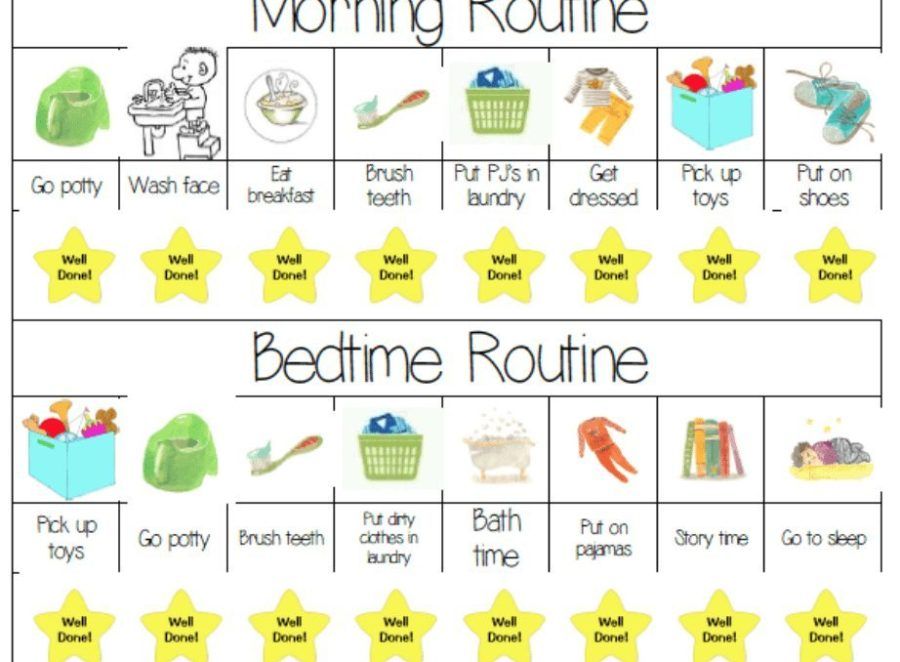What do you feed a baby bluejay
What Do Baby Blue Jays Eat?
by Jesse
Blue jays are an easily recognizable, perhaps even iconic, songbird. Their large size, blue feathers, and distinctive call mean that just about anyone can recognize a blue jay. Adults can often be seen eating large acorns, and are drawn to feeders full of things like peanuts and sunflower seeds. They also have been known to occasionally raid the nests of other birds, eating their eggs and chicks. So we know what adult blue jays eat, but what do baby blue jays eat?
What Do Baby Blue Jays Eat?
As with most birds, baby blue jays eat more or less the same things that their parents eat. Adult blue jays bring nuts, seeds, insects and small animals back to the nest for their chicks. For at least six weeks after hatching, the chicks are totally dependent on their parents to bring them food, and the parents bring whatever they can find.
Do Baby Blue Jays Eat Worms?
If their parents bring them a worm, they’ll eat it. Caterpillars and seeds are probably more common, but earthworms certainly make their way into many baby blue jay’s diets. Worms are a little hard to find, since they’re usually underground, but occasionally a heavy rain or human activity brings a bunch of worms to the surface, and the blue jays will definitely go after them. The parents must also take size into consideration, very young nestlings often cannot yet eat large earthworms.
How to Feed Baby Blue Jays
If you need to feed a baby blue jay, use either moist dog/cat food or commercially sold baby bird food, fed through an eye dropper. However in general you should not attempt to do this yourself, and we will talk about why below.
If you’ve found a nest with baby blue jays you suspect is abandoned, don’t jump to any quick conclusions. In most cases of a nest with begging babies, the adults are nearby finding food and will come back periodically to feed the young. Male and female blue jays both take turns feeding the young, however it has been observed that males may often do the majority of the feeding.
Some feedings can be very quick, and the adults will only stop by for a minute before leaving to find food again. Because you could easily miss this quick process, you would have to watch a nest non-stop (not a few minutes at a time) for at least a few hours before you could determine if the babies have potentially been abandoned.
Contacting a Wildlife Rehab Expert
If you have determined that the baby blue jays do need help, it is important to contact a qualified bird rehabber. In many states, only certified rehab specialists are allowed to be in possession of wild birds. Not to mention they are trained in exactly how to care for them.
Care of baby birds can be very tricky. Many nestlings need to be fed every 20 minutes or so for 12 to 14 hours a day! That is a lot of constant time and attention. They also need balanced food with enough protein and nutrients to grow properly. This is why the knowledge and expertise of a rehabber is their best bet for survival.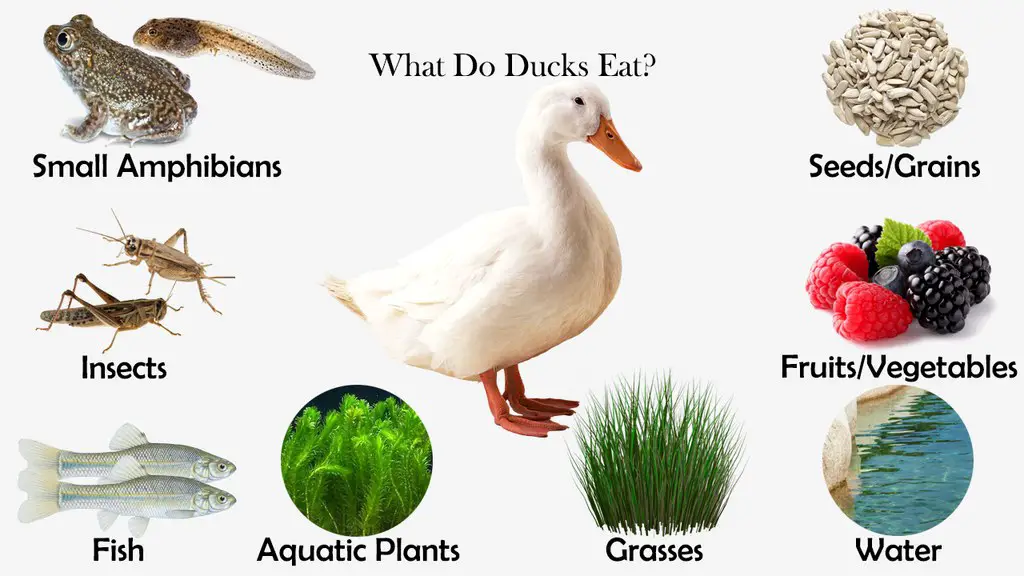
If you get in touch with a rehabber that isn’t able to take the birds right away, they may instruct you on how to care for them until they can pick them up. For the short term, dog or cat food (moist, fed through a dropper), or specialty baby bird food mix, is often used.
To find a rehabber near you, Google search the name of your state plus “wildlife rehabilitation”, or check your states department of the environment page for a list of licensed rehabbers.
Do Blue Jays Really Raid Other Bird’s Nests?
This is a widely held belief, and it’s not entirely clear why this is so commonly believed. In fact, there’s not really much evidence to suggest that blue jays are nest-raiders. In a study performed on blue jay diet that looked at their stomach contents, researchers found remains of eggs or nestlings in only 1% of adult blue jays, which hardly makes them stand out as “egg snatchers” over other birds.
While blue jays are not big nest-raiders themselves, they have to be on guard against other birds.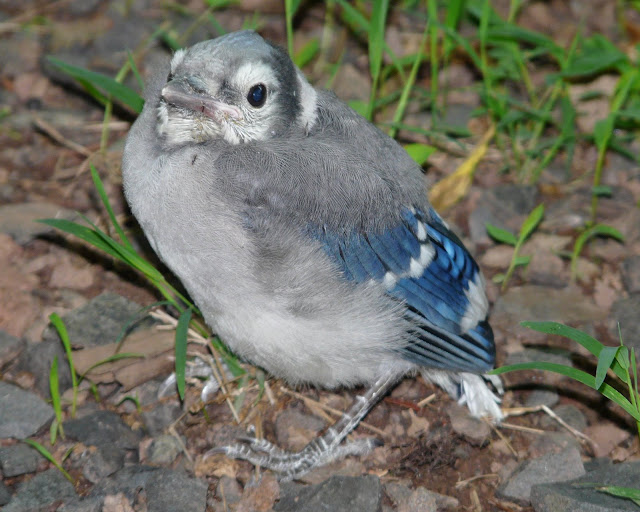 Crows, especially, will eat blue jay eggs or kill and eat their chicks.
Crows, especially, will eat blue jay eggs or kill and eat their chicks.
Why Did a Blue Jay Attack Me?
Despite the fact that they are somewhat small in the world of wildlife, blue jays are surprisingly aggressive and fearless. Plenty of people have been attacked by angry blue jays, and most of them were just walking down the street or in their yard when it happened. Fortunately blue jays aren’t really capable of doing any damage, but it’s still an unnerving experience.
In all likelihood, if you’re dive bombed by a blue jay, you were walking too close to their nest. Blue jays like to build their nests high up in trees and they hide them well, so it’s rare to spot them. The parents, though, are fierce protectors and won’t hesitate to chase of potential predators.
This is especially true around May and June, when the babies are just learning to fly. This is when they’re at their most vulnerable, and the adults get extra protective of them. That’s when most blue jay attacks occur.
Do Blue Jays Like Acorns?
Acorns are a favorite food of blue jays, although they’re a bit too big for the babies to eat. That’s fine, since by the time acorns are available the babies will have left the nest and grown to adult size. Acorns are a favorite for blue jays, and each fall adult birds will hide somewhere between 3,000 and 5,000 acorns in the ground, saving them for the winter months.
In fact, blue jays are credited with spreading oak forests across the U.S. While they remember where they put most of those acorns, they always forget some of them, which means that each blue jay ends up planting a bunch of oak trees every fall.
Conclusion
Baby blue jays eat just about anything their parents bring them. Mostly, that means seeds, nuts, and insects. If you find yourself caring for baby blue jays that have been abandoned while waiting for help from a rehabber, pet food or commercially sold baby bird food will help to meet their nutritional needs.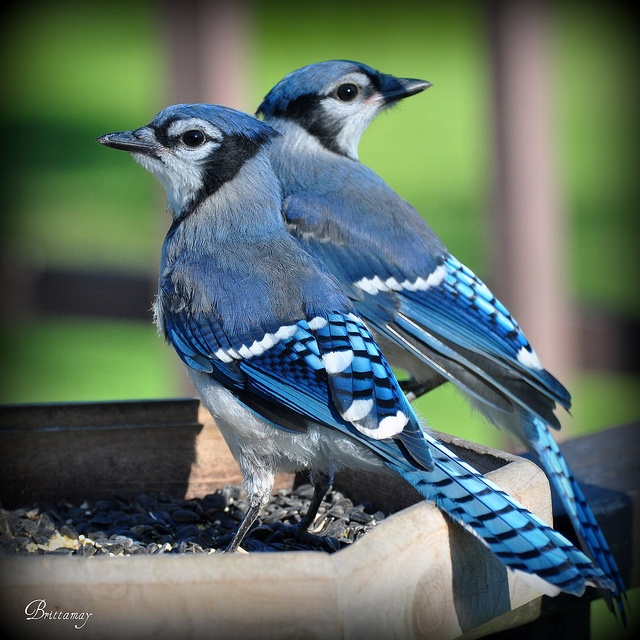
About Jesse
Jesse enjoys bird watching and feeding birds in his backyard, learning about the different species, and sharing his knowledge and experiences.
...
How to Feed Wild Baby Blue Jays
By Laura Wallace Henderson | Updated September 26, 2017Things You'll Need
Blue jay food
Fresh berries
Raw nuts
Canned pet food
Eye dropper
Plastic drinking straw
Blue jays are brightly colored, blue birds known for their unusual color. Blue jays are commonly found in the central and eastern United States and in southern Canada. Blue jays like to live in clearings, near wooded areas and buildings. Baby blue jays normally stay with their parents for their first two months of life. They are often able to start finding their own food when they are just a few weeks of age. Very young blue jays require assistance when abandoned by their parents.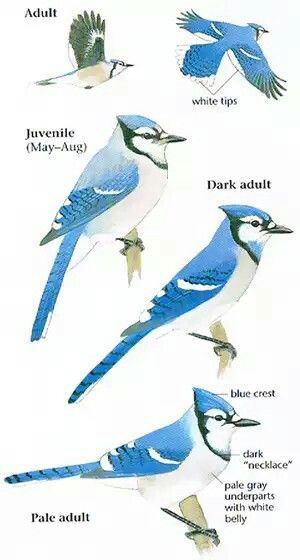 You may need to assist a baby blue jay by feeding him until he is old enough to feed himself.
You may need to assist a baby blue jay by feeding him until he is old enough to feed himself.
i Jupiterimages/Comstock/Getty Images
Check with your local farm supply store for commercial blue jay food. Some pet stores also carry prepared blue jay food. Purchase a small quantity of this ready-made food to try on your new baby bird. Soften this food with water for feeding to immature birds. If you cannot find packaged blue jay food, make your own blend from scratch.
i Jupiterimages/Photos.com/Getty Images
Select a variety of fresh food for preparing your own blend of baby blue jay food. These birds are omnivorous, meaning they consume food from plant and meat sources. Select raw, unsalted nuts and soft grains for your rescued baby bird. Berries should be fresh or frozen, not canned. Purchase produce that has not been subject to chemical processing. Thoroughly wash all fresh produce. Use canned cat or dog food as an animal protein source for your baby blue jay.
i Ryan McVay/Photodisc/Getty Images
Select an object shaped like the beak of a mother blue jay.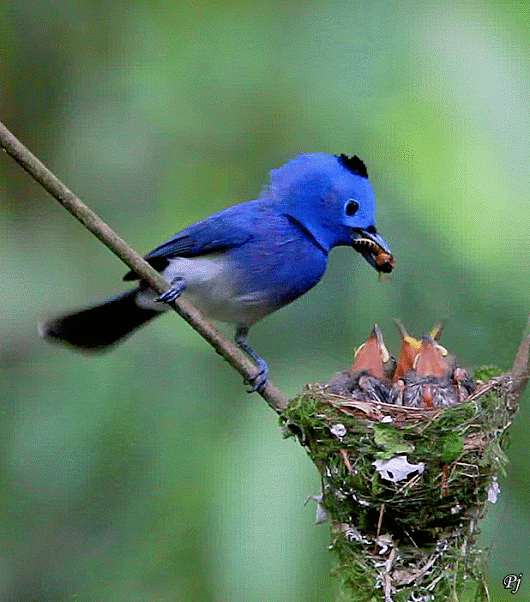 A pointed eye dropper works for this purpose. You can also trim the tip of a plastic drinking straw into a slight point to use to feed the baby bird. Grind your ingredients into a smooth gruel. Add a little water to produce a soft consistency. Place a small amount on the tip of your straw or dropper. Baby birds open their mouths very widely when it is time to eat. Gently and quickly press the food to the back of the baby’s open mouth. Do not press down the throat. Allow the baby blue jay sufficient time to swallow the food.
A pointed eye dropper works for this purpose. You can also trim the tip of a plastic drinking straw into a slight point to use to feed the baby bird. Grind your ingredients into a smooth gruel. Add a little water to produce a soft consistency. Place a small amount on the tip of your straw or dropper. Baby birds open their mouths very widely when it is time to eat. Gently and quickly press the food to the back of the baby’s open mouth. Do not press down the throat. Allow the baby blue jay sufficient time to swallow the food.
Be prepared to feed the baby bird often. Depending on his age, he may need to eat every two to three hours.
References
- University of Michigan, Museum of Zoology
- National Park Service
- Orphaned and Injured Birds – The Center for Rehabilitation of Wildlife
Photo Credits
Writer Bio
Laura Wallace Henderson, a professional freelance writer, began writing in 1989. Her articles appear online at Biz Mojo, Walden University and various other websites.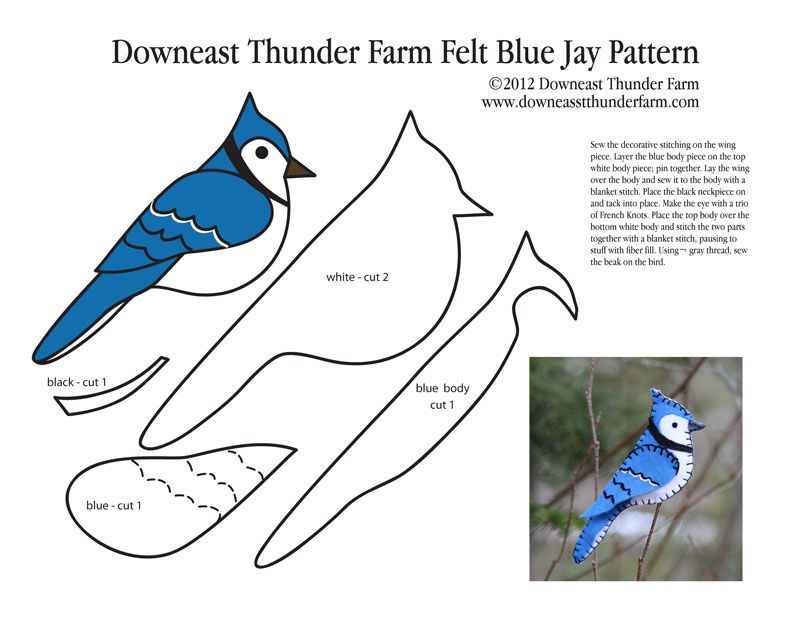 She has served as the co-editor for "Kansas Women: Focus on Health." She continues to empower and encourage women everywhere by promoting health, career growth and business management skills.
She has served as the co-editor for "Kansas Women: Focus on Health." She continues to empower and encourage women everywhere by promoting health, career growth and business management skills.
bird description, behavioral features, species and habitat (range)
Jay is a bird of the corvid family with bright plumage. It is found in Europe, North Africa, Asia, the Caucasus. In the northern latitudes, the jay is a migratory bird, in warm places it is a settled bird. Prefers to settle in forests and woodlands.
In the article we will consider what types of jays are, the features of their lifestyle, reproduction and nesting.
What a common jay looks likeFeatures and lifestyle
Jays attract the eye with beautiful bright plumage. These birds can very skillfully imitate different sounds. Jay body length is about 45 cm, weight - no more than 200 g. The beak is short and sharp, legs are long, fingers have tenacious claws. The plumage deserves special attention:
- there is a small motley tuft on the head, a gray-white ornament on the forehead;
- neck, occiput, belly beige-pink with gradation of shades;
- in the central part under the beak, the throat is white; nine0012
- black stripes on the sides of the beak;
- The middle of the wings is covered with blue-blue stripes, and their edges are black.
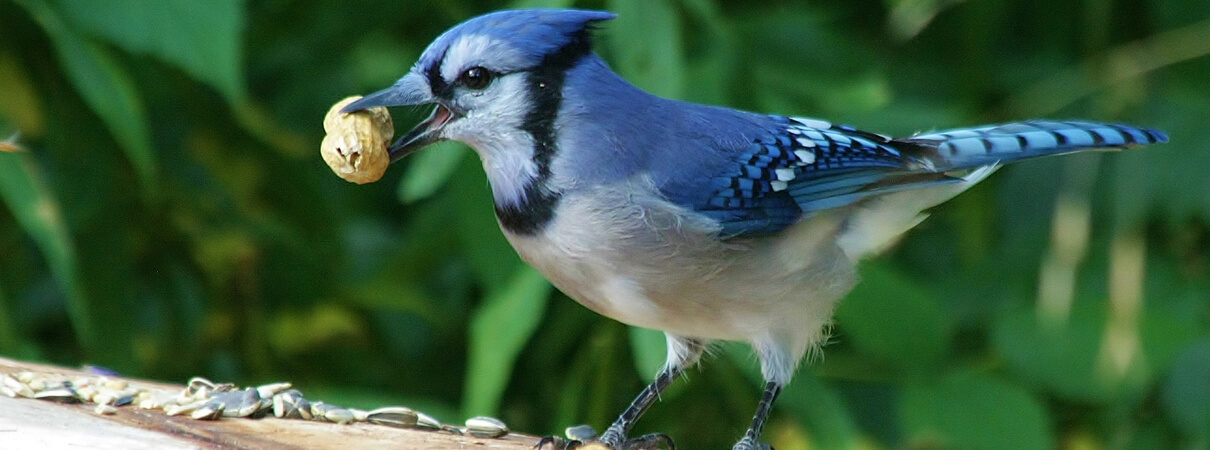
In chicks, the plumage color is not as bright as in adult birds. Males differ from females only in larger sizes. In flight, the jay looks especially beautiful, exposing all plumage to the public. Descending to the ground, she moves in jumps.
INTERESTING FACT. The color of the iris in jays varies with age. In chicks it is dark brown, in adults it is light blue. nine0003
The jay is diurnal, but it is difficult to see them in nature. Wild birds are quite shy and always try to hide when they hear any sounds and rustles. Often they make sharp cries, notifying relatives of the approach of danger. The exception is birds living in the city. They get used to people and make it possible to get closer to a distance of 4-5 meters.
Jays do not have a beautiful voice. Basically, they make whistles, clicks, crackles, but they easily repeat the sounds of other birds or animals. If they live in a village, they can easily imitate the meow of a cat, the voice of a goat or a sheep, the creak of a door, the knock of an ax. Birds that are kept in captivity are able to repeat words after a person. Interestingly, they imitate not only sounds, but also intonations. nine0003
Birds that are kept in captivity are able to repeat words after a person. Interestingly, they imitate not only sounds, but also intonations. nine0003
See how a jay imitates a cat's meow:
Jays love to live in the canopy of trees, they rarely come down to the ground or fly in open areas. Usually they live in pairs, but with the onset of cold weather they gather in groups of up to 30 pieces. So they are saved from the cold.
Two jays approaching each otherNatural enemies
Birds of prey and some animals prey on jays. Man negatively affects the habitat of birds. After visiting a field sprayed with pesticides or other poisonous substances, birds often die from poisoning. In order to preserve the harvest of grapes, apples, pears and other fruits, people set up various traps for birds into which jays fall. nine0003
What they eat
The basis of the diet is food of plant origin, such as nuts, acorns, raspberries, mountain ash, etc. Jays often host in the fields where they find wheat, rye, barley, sunflower, and oats. At the end of spring and before the onset of cold weather, they consume animal food: May beetles, bronze beetles, silkworm caterpillars. Insects are necessarily included in the menu of chicks. With a lack of food, predatory instincts can manifest in a jay - it can kill a mouse, lizard, frog or small bird. nine0003
At the end of spring and before the onset of cold weather, they consume animal food: May beetles, bronze beetles, silkworm caterpillars. Insects are necessarily included in the menu of chicks. With a lack of food, predatory instincts can manifest in a jay - it can kill a mouse, lizard, frog or small bird. nine0003
With the onset of cold weather, jays stock up. They carry food in their beaks and hide it under the bark of a tree, in dry grass or leaves. Stocks for the winter by weight can be 3-4 kg. Often, birds forget about winter supplies, and with the onset of spring, the seeds germinate. Thus, they contribute to the spread of plants and trees over long distances.
In winter, in search of a food base, jays move closer to human habitation. Then they can often be seen in villages, suburbs and city parks. nine0003
Jay species
There are more than 40 species of these birds in the world. However, ornithologists argue that there may be unexplored species living in places inaccessible to humans. The most common are the following species:
The most common are the following species:
- Common jay - lives in the forests of Europe, Asia and northern Africa. Among other species, it is considered the largest.
- Decorated jay - distinguished by dark purple head and wings, brown back and belly. They are only distributed in Japan. nine0012
- Himalayan jay - lives in the Himalayas. The feather color is very diverse: the head is black and resembles a crow, the color of the body and wings is similar to the common jay, but the plumage on the back has a gray tint.
- Saxaul jay lives in thickets of bushes and steppes of Mongolia. In appearance, it resembles a small crow. It is known that this bird prefers to run or jump, but it flies poorly.
- Crested jay has a long crest and grey-brown plumage. There is a black and white patch on the neck. Lives in Thailand and Malaysia. Unlike other species, it is not afraid of people. Young birds are distinguished by a striped variegated color, in the process of growing up, the plumage changes to black.
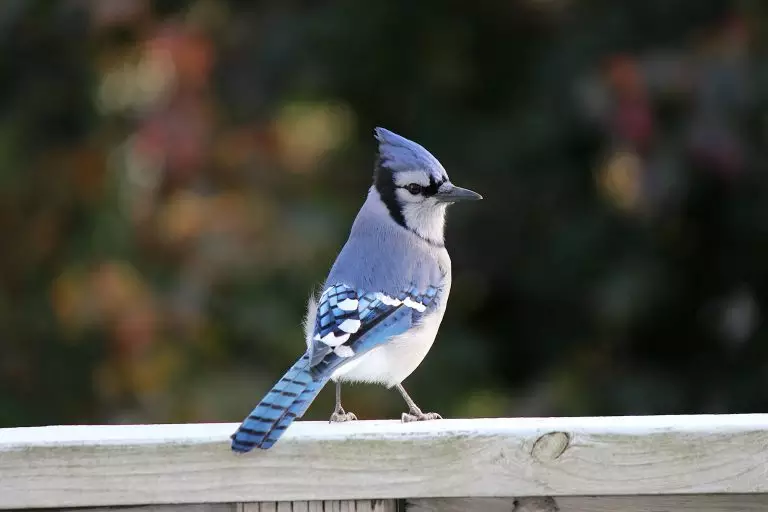 nine0012
nine0012 - American blue jay lives in mixed and pine forests of central America. The main color of its plumage is blue-blue, the abdomen and feathers around the eyes are white. The edges of the wings and tail are white.
- Black-headed jay - a bird that lives in Mexican forests. The structure of the tail is very similar to the magpie. The bird has a black crest that curls up when excited. The plumage of the back, neck and tail is blue, the belly is white. The voice of these birds resembles the cry of parrots. nine0012
- Bush Blue Jay - This species lives in the forested areas of Florida. The head, wings and back have a blue plumage, from below - light gray. This species is rare and listed in the Red Book.
- The Yucatan jay is a rare species, their representatives are very afraid of people, so it is difficult to see them. They live in the forests of North America in the ruins of old buildings. The head and body are covered with black plumage, the wings and tail are bright blue.

- The Mockingjay is a species of bird created by crossing female Mockingjays and male Talking Jays. nine0012
Unfortunately, some species are in decline. This is due to thoughtless human activity, especially deforestation - the main habitat of these beautiful birds.
Red Book blue jay in the wildReproduction and care of chicks
Jays reach sexual maturity already in the first year of life. Birds move to an active search for a partner in early spring, pairs create for life. Males try to attract females by flying over the crowns of trees and arranging real concerts. Their song includes sounds made by other birds, as well as imitations of forest noise. nine0003
Jay nest
A new pair starts nest building in April. It can be used multiple times by the same parents. Construction takes at least a week. The nest, about 20 cm in diameter, is cup-shaped and 8-10 cm deep. Tree branches serve as its base, inside the surface is covered with hay, moss and feathers. The clutch usually contains 5-7 dark green eggs. Sometimes it happens that a marten or a ferret ruins the nest. If this happened before summer, the female may lay her eggs again. Incubation is done by both parents in turn. nine0003
The clutch usually contains 5-7 dark green eggs. Sometimes it happens that a marten or a ferret ruins the nest. If this happened before summer, the female may lay her eggs again. Incubation is done by both parents in turn. nine0003
Description and feeding of chicks
Chicks hatch in 2.5-3 weeks. They are very gluttonous and can take food from each other. With a lack of insects, some of the babies die. If there is enough food supply, then after 3 weeks the chicks leave the nest. However, parents still feed and take care of them until the beginning of autumn.
Interesting facts about jays
Jays sometimes show remarkable intelligence and ingenuity. Thanks to their sharp mind and ingenuity, they survive in difficult conditions. Here are some interesting facts about the jay:
- To make a pantry with supplies, these birds can ruin someone else's workpiece. Jays, having spied on relatives or other birds, steal food from them and hide them in their secret places.
 With a large accumulation of jays, you can see how a kind of competition takes place in the search for and transfer of someone else's food. They do not disdain pantries of squirrels, chipmunks and other animals. American jays steal acorns from woodpeckers. They are very cautious, and before hiding the prey they look around, fly from place to place, and, making sure that no one is watching them, they hide supplies. nine0012
With a large accumulation of jays, you can see how a kind of competition takes place in the search for and transfer of someone else's food. They do not disdain pantries of squirrels, chipmunks and other animals. American jays steal acorns from woodpeckers. They are very cautious, and before hiding the prey they look around, fly from place to place, and, making sure that no one is watching them, they hide supplies. nine0012 - Jays get rid of parasites in an interesting way. They find an anthill and walk on it or sit on top. Ants spray acid on the bird, which kills the parasites that have appeared on the feathers.
- In the wild, jays live for about 7 years. In favorable climatic conditions and with a good food supply, some birds lived up to 16 years. It is known that a wild jay chick can be tamed. With proper care in captivity, birds can live up to 20 years.
Keeping a jay at home
Jays and other corvids are very intelligent and sociable, so they are often kept as pets. The omnivorous nature of these birds makes it easier for the owner to find food. It is enough to feed the bird with what is in the refrigerator. But to maintain good health, the jay needs a varied menu.
The omnivorous nature of these birds makes it easier for the owner to find food. It is enough to feed the bird with what is in the refrigerator. But to maintain good health, the jay needs a varied menu.
Flying feathers and droppings are difficult to keep, so it is better to settle the bird in a spacious aviary, and not in a cage. It should be equipped with a large branch with many knots or several perches. Shoots of living trees are not suitable for this purpose; it is better to choose a long-fallen dry tree. An excellent option would be strong oak branches. The floor of the aviary must be covered with an easily washable material, for example, linoleum. Sawdust is poured on top or paper is spread. nine0003
The desire to have a jay must be well thought out so that later it does not become a burden. You should not buy a bird for a child, as the interests of children change quickly.
You need to buy a young bird - they are quickly tamed and get used to the owner. An adult wild bird cannot be domesticated. Even if you take home a tamed jay from another owner, the likelihood that it will get used to you is not great. In captivity, birds are kept alone, otherwise two or more individuals will fight among themselves and cripple each other. nine0003
Even if you take home a tamed jay from another owner, the likelihood that it will get used to you is not great. In captivity, birds are kept alone, otherwise two or more individuals will fight among themselves and cripple each other. nine0003
What to feed
Jays and other birds of the corvid family can be fed with boiled minced meat, small pieces of meat, cottage cheese, eggs, various cereals, grated vegetables, fruits, nuts. Be sure to add minerals, the bird needs them, especially in the process of molting. It is advisable to give minerals in the form of a special "bird stone", which is sold in almost any pet store. You can offer your pet whole raw eggs. The bird will drink the internal contents, and eat the shell as mineral feed. nine0003
The cage or aviary must have clean water in a drinking bowl and separately in a bathing container. To take baths, pour water into a wide tray with high sides or a basin.
Jay with food in the aviaryWalk
To keep the bird healthy, you need to let it fly. You can do this in the apartment, but it is better - in the yard under the supervision of the owner. In this case, care should be taken, as a trusting bird can suffer at the hands of other people. nine0003
You can do this in the apartment, but it is better - in the yard under the supervision of the owner. In this case, care should be taken, as a trusting bird can suffer at the hands of other people. nine0003
INTERESTING FACT. Jays are good at distinguishing familiar people from strangers. They well distinguish the voice of the owner and fly to his call.
Toys and entertainment
Jays are fidgety, so they should be given some toys. Like most members of the corvid family, jays are very fond of shiny things. You can put foil, coins, a ball, a box with counting sticks and so on in a cage. If you do not provide them with entertainment, they will find something to play on their own, for example, they will pull the wallpaper, tear the leaves of indoor plants, peck at watches and jewelry. nine0003
To teach a jay human speech, you need to communicate with it regularly. You can call her by name, pronounce simple phrases, and the result will not be long in coming. But it is important to remember that only a tame jay can be taught to speak. Adult birds that were taken home rarely repeat words after a person.
But it is important to remember that only a tame jay can be taught to speak. Adult birds that were taken home rarely repeat words after a person.
Where to buy a jay
It is better to buy a jay at the Bird Market, but these birds are not always on sale. The common jay is not a rare species, so you can take a young individual from the nest. But this must be done with the utmost care. You can not take very small chicks - it will be very difficult to feed them. A grown-up baby, who is about to leave the nest, will do. Also, you can not come close to the chicks when the parents are nearby. You should wait until they fly away and take one chick. You need to come to the nesting place with a helmet on your head to protect yourself from a possible attack by the chick's parents. After the removal of the young jay, it is imperative to check whether the adult birds have returned to the rest of the chicks. nine0003
If you have picked up an adult diseased jay, you need to carefully examine it. If a bird cannot fly because of broken feathers, break them off so that new ones grow faster in this place. In the presence of complex injuries, it is necessary to take it to the veterinarian. If, after recovery, the bird can walk and fly, it is better to release it to freedom. There are times when a wounded jay got used to the owner and did not want to fly away from him. Then she becomes a true friend for many years. If, after the injuries received, the bird can no longer lead its usual way of life, it must not be released. In this case, you can keep it at home or give it to good hands. nine0003
If a bird cannot fly because of broken feathers, break them off so that new ones grow faster in this place. In the presence of complex injuries, it is necessary to take it to the veterinarian. If, after recovery, the bird can walk and fly, it is better to release it to freedom. There are times when a wounded jay got used to the owner and did not want to fly away from him. Then she becomes a true friend for many years. If, after the injuries received, the bird can no longer lead its usual way of life, it must not be released. In this case, you can keep it at home or give it to good hands. nine0003
Video about a bird
We offer you to watch a video about interesting facts from the life of jays.
Blue Jay - Corvidae | Non-commercial educational and cognitive Internet portal Zoogalaxy
6064 6065 6066 8409 8410 8411 865Habitat
The range of blue jay ( Cyanocitta cristata ) extends from the eastern United States and southern Canada to the Gulf of Mexico.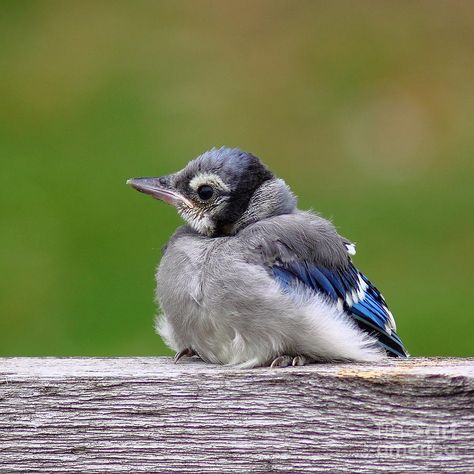 Most of the birds living in the north of the range migrate to the south in winter. The migration takes place during daylight hours in flocks of 5-50 birds and more (flocks of up to 3000 birds have been observed). Blue jays inhabit a wide variety of habitats - deciduous forests, parks and gardens, suburban residential areas. But still they prefer mixed oak and beech forests, however, in the west of the range they can also be found in dry pine forests and shrubs. nine0003
Most of the birds living in the north of the range migrate to the south in winter. The migration takes place during daylight hours in flocks of 5-50 birds and more (flocks of up to 3000 birds have been observed). Blue jays inhabit a wide variety of habitats - deciduous forests, parks and gardens, suburban residential areas. But still they prefer mixed oak and beech forests, however, in the west of the range they can also be found in dry pine forests and shrubs. nine0003
Description
The body length of these beautiful birds reaches 30 cm, wingspan - about 42 cm, weight ranges from 70 to 100 g. The blue jay has a blue back, a long bright blue crest, a black necklace, a blue-black-white pattern on the wings - white striped tail. Females and males are colored the same, but males are somewhat larger. Their beak is strong, thanks to which jays easily split seeds with a hard shell. These birds can make a wide variety of sounds, such as melodious whistles and bell-like sounds; they imitate the calls of the hawk; shout loudly, warning of the approach of a predator; the pair, communicating with each other, makes a sound similar to the work of a rusty pump.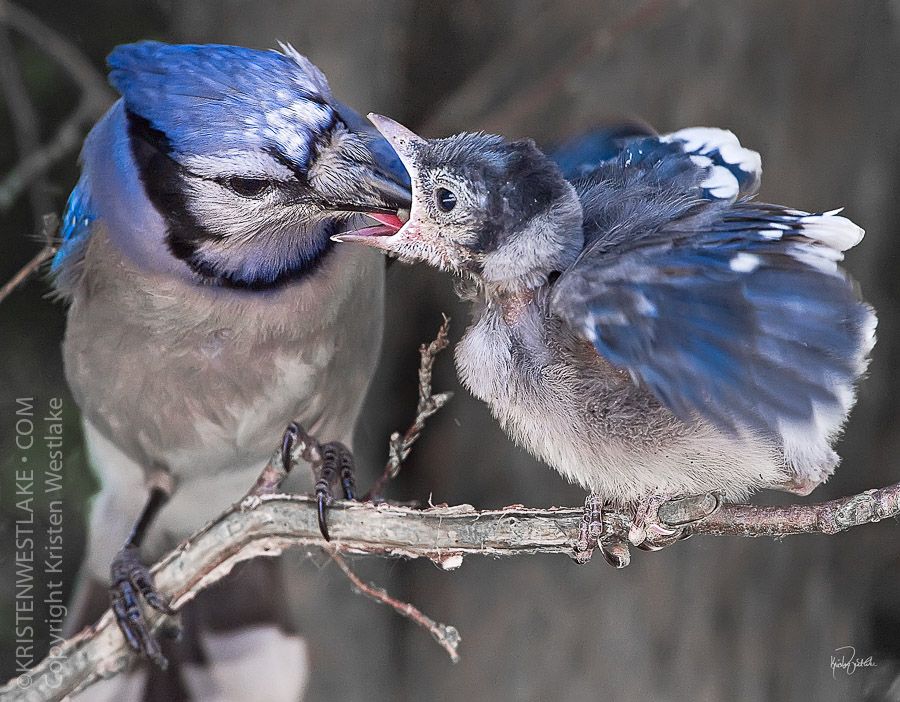 Sometimes jays imitate hawks to deceive other birds and drive them away from their food. They are excellent imitators, in captivity they quickly learn to imitate human speech. nine0003
Sometimes jays imitate hawks to deceive other birds and drive them away from their food. They are excellent imitators, in captivity they quickly learn to imitate human speech. nine0003
Nutrition and behavior
Blue Jays are social birds, they live in pairs, small family groups or flocks. Jays are omnivorous, their diet includes both vegetable (acorns, beech nuts, seeds and fruits, berries - up to 78%) and animal feed (beetles, grasshoppers, spiders, centipedes, caterpillars, small vertebrates - chicks and eggs, lizards and frogs, mice - up to 22%), as well as carrion. Blue jays often steal prey from other birds. Non-migratory individuals make stocks for the winter, for example, acorns and seeds are hidden in cracks in the bark or under fallen leaves, buried in the soil. One jay in autumn can "prepare" up to 3-5 thousand acorns. At one time, this bird carries up to five acorns - it puts 2-3 acorns in the goiter, holds one in its mouth and one more in its beak. nine0003
nine0003
Nesting
Blue Jays are monogamous and form permanent pairs (sometimes for life.) Typically, nests of these birds, 18-20 cm in diameter, are located in the forks of lateral branches of deciduous or coniferous trees at a height of 3-10 m above the ground. The rods used for the outer part of the nest are broken off by birds from living trees. Jays collect various roots with which the nest is leveled in freshly dug ditches, fresh graves in cemeteries, from recently fallen trees, etc. All this is carefully laid, and sometimes sealed with moist earth or clay. The nest tray is lined with rags, wool, lichen, paper, dry leaves and grass. Before finishing nest building, birds build several incomplete nests as part of their courtship ritual. Feeding the female is also part of this ritual - flying up to the male on a nearby tree, the female takes the pose of a chick asking for food and the male feeds her. If the nest is discovered by a predator, the birds may leave it forever.



